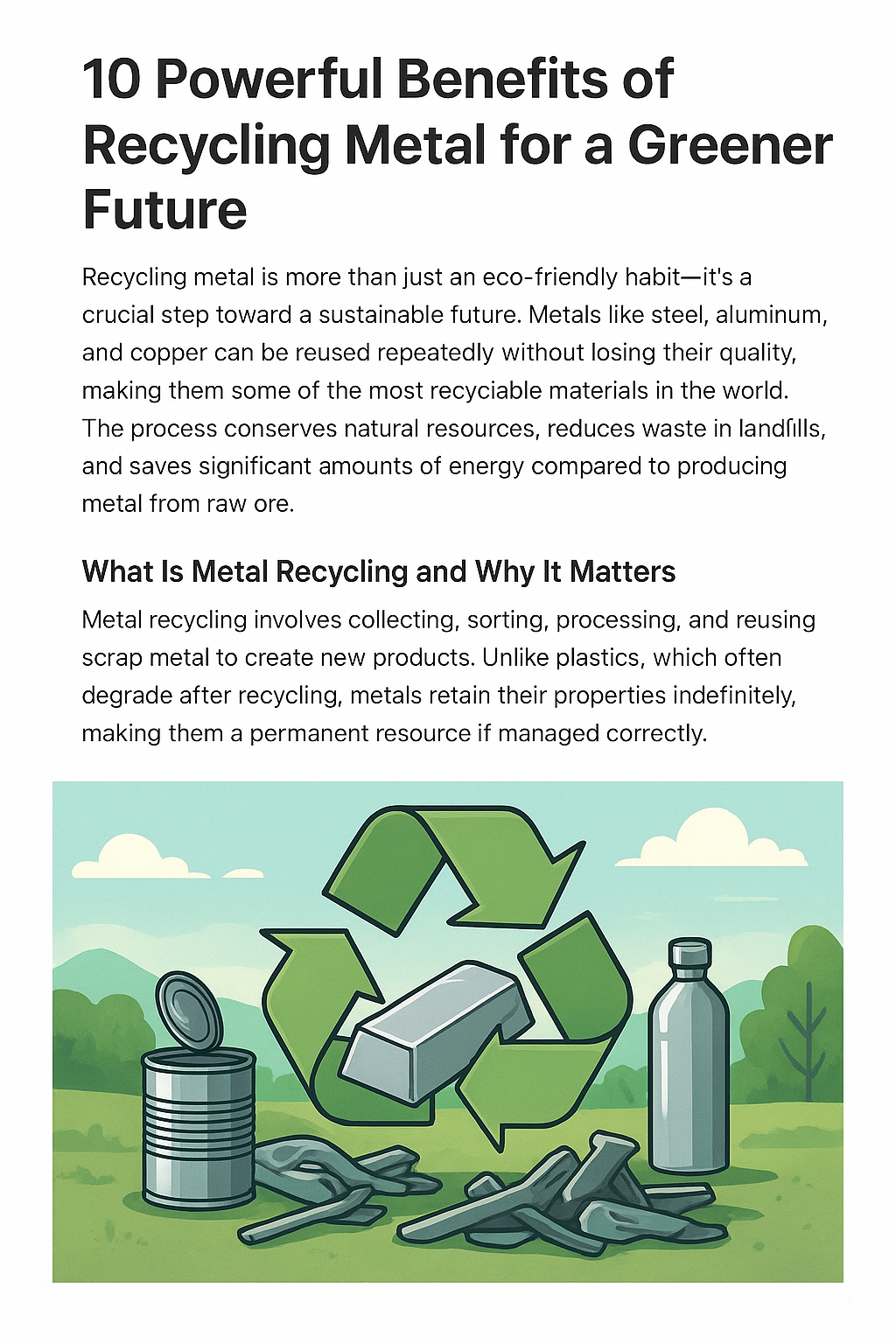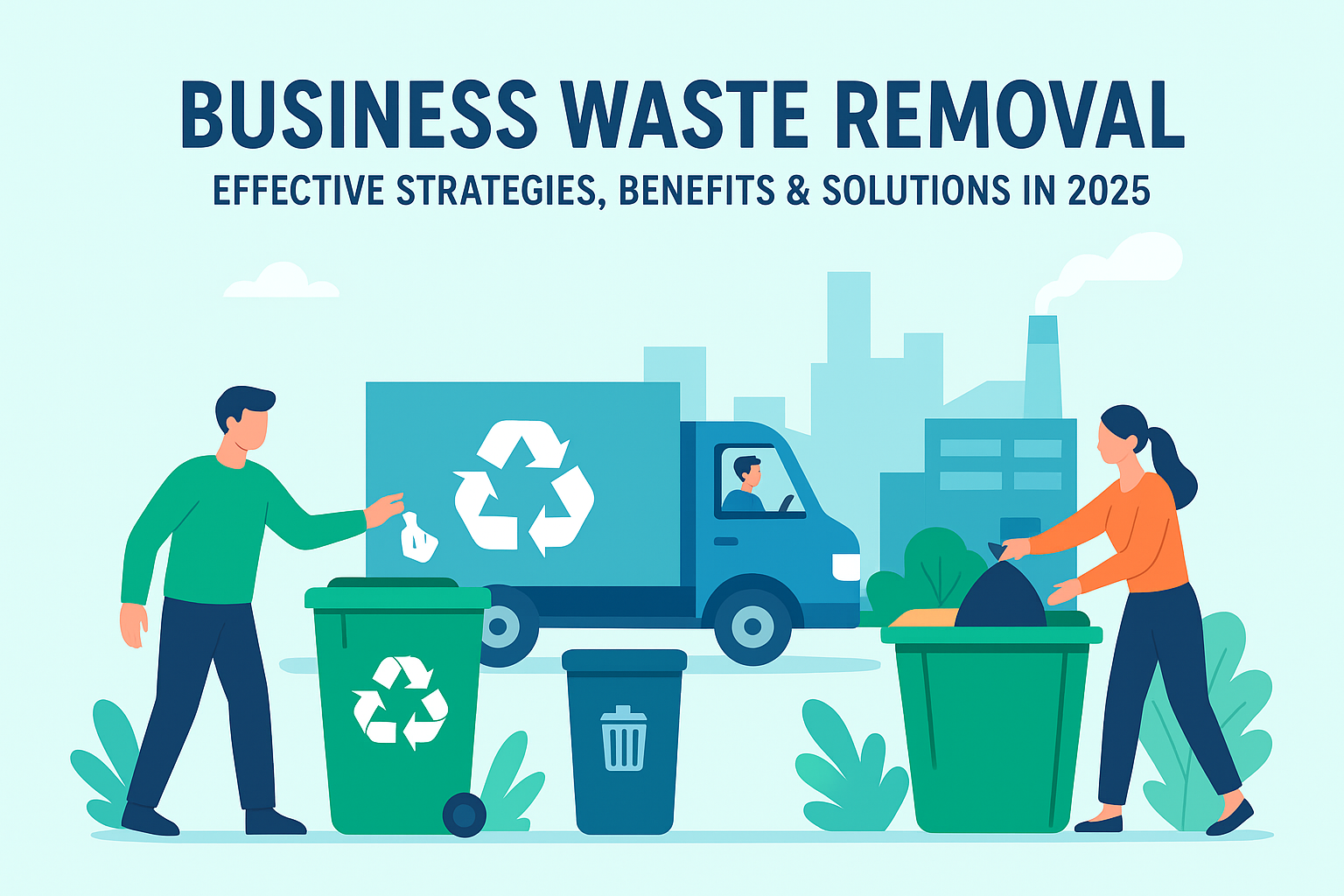
Maximize Your Business's Wood Furniture Recycling: Smart Strategies for Commercial Operations
By BKThemes
Transforming old office furniture into valuable resources is a smart move for businesses, cutting down on landfill waste and boosting your company’s green credentials. When you know how to recycle wood furniture effectively, you’ll not only save money on disposal but also meet environmental standards and enhance your sustainability reputation. This guide dives into the common types of wood waste from commercial settings, the financial and environmental perks of recycling, a clear process for handling it, tips for choosing and renting dumpsters, regulatory insights, advanced reuse ideas, and how National Waste can simplify wood furniture disposal for businesses with 50 to 5,000 locations.
What Types of Wood Furniture Waste Do Businesses Typically Need to Recycle?
Understanding the different kinds of wood furniture waste helps businesses pick the right recycling methods, keep materials out of landfills, and prepare them for their next life .
| Wood Type | Key Features | Recycling Potential |
|---|---|---|
| Solid Hardwood | Dense wood like oak, maple, cherry with a consistent grain pattern. | High: Can be repurposed into new panelboard or reclaimed as lumber. |
| Softwood Lumber | Lighter woods like pine, fir, spruce often found in cubicle construction. | High: Excellent for chipping into mulch or using as biomass fuel. |
| Treated Wood | Surfaces that have been stained, painted, or pressure-treated. | Conditional: Requires special handling to remove coatings before processing. |
| Particleboard | Engineered wood made from sawdust and adhesive binders. | Moderate: Fibers can be used for mulch, but adhesives can complicate processing. |
| Plywood | Layers of wood veneer glued together. | Moderate: Layers can be separated for composite recycling or energy recovery. |
Solid hardwood and softwood lumber usually provide clean, high-quality materials for making new wood products. Treated and composite woods need extra steps in sorting or treatment to meet processing requirements.
What Wood Materials Are Most Common in Commercial Furniture Waste?
Businesses commonly discard solid hardwood from executive desks and shelving, softwood framing from cubicles, and plywood components from cabinets. When processed, these materials break down into uniform chips and fibers, making them ideal for mulch, biomass, and engineered wood products. Knowing these categories helps waste managers allocate resources efficiently for sorting and preparation .
How Do Treated and Untreated Woods Differ in Recycling Needs?
Treated wood often has stains, varnishes, paints, or chemical preservatives that must be removed or isolated during recycling to avoid contaminating the final recycled products. Untreated wood from raw lumber can be directly shredded and reused. Businesses should separate treated wood at collection points to ensure they meet the standards of processing facilities and prevent cross-contamination that could lower the market value of recycled materials.
What Are the Challenges with Recycling Particleboard and Composite Wood?
Particleboard and composite wood contain resins and adhesives that make fiber recovery more difficult and increase processing costs. These materials often break down into fine particles during shredding, requiring extra screening and separation. Businesses should anticipate lower diversion rates and potentially higher disposal fees, making clear sorting guidelines crucial for efficient recycling .
Why Should Businesses Make Wood Furniture Recycling a Priority?
Prioritizing wood furniture recycling offers immediate environmental advantages and a strong business case by reducing waste expenses and reinforcing your commitment to corporate social responsibility .
How Does Recycling Wood Furniture Cut Down on Landfill Waste and Methane Emissions?
Recycling wood furniture stops organic materials from decomposing without oxygen in landfills, a process that releases methane—a greenhouse gas far more potent than carbon dioxide. Diverting wood ensures it goes through controlled processing where it’s turned into mulch, panelboard, or biomass fuel, preventing harmful emissions and conserving natural resources. Waste to energy
Wood Waste Management in the Furniture Industry: Comparing Recycling, Energy Recovery, and Landfill Treatments
A comprehensive study analyzing the environmental impact of different wood waste management methods in the furniture industry revealed that recycling wood waste into products like medium-density fiberboard (MDF) and medium-density particleboard (MDP) offers significant environmental benefits. These recycling approaches are far superior to landfill disposal, which contributes to greenhouse gas emissions and shortens landfill life. The research highlights that producing MDF from wood waste can effectively sequester a considerable amount of CO₂.
This research strongly supports the article’s points about the environmental advantages of recycling wood furniture, particularly in reducing landfill waste and greenhouse gas emissions by redirecting wood to productive uses like panelboard manufacturing .
What Are the Financial Advantages of Commercial Wood Recycling?
- Lower Disposal Fees – Recycling centers typically charge less per ton than landfills.
- Revenue from Materials – Clean wood streams can be sold to manufacturers of panelboard or biomass energy.
- Reduced Transport Costs – Consolidated dumpster rentals and coordinated pickups across multiple sites minimize hauling distances.
- Potential Tax Benefits – Some areas offer credits or rebates for diverting wood waste.
These cost savings allow businesses to reallocate funds to core operations while potentially turning waste into a source of income .
How Can Wood Recycling Boost a Business’s Sustainability and Brand Image?
Demonstrating a commitment to circular economy principles builds trust with stakeholders and meets the increasing consumer demand for environmentally responsible companies. Publicizing your diversion rates and how recycled materials are used supports green certifications and ESG reporting, positioning your business as a leader in sustainable waste management.
What Is the Step-by-Step Process for Commercial Wood Furniture Recycling?
A consistent recycling workflow—covering collection, sorting, shredding, and delivery to end markets—ensures maximum material recovery and cost-effectiveness for large-scale operations.
- Collection – Arrange for roll-off dumpster delivery to each of your facilities.
- On-Site Sorting – Separate solid lumber, treated wood, and composite materials for specific processing.
- Shredding and Grinding – Break down wood into chips, fibers, or sawdust.
- Contaminant Removal – Screen out metals, fasteners, and other non-wood items.
- Transport to End Markets – Deliver processed materials for use in mulch, biomass energy, or engineered wood panels.
Following these steps minimizes waste, maximizes material yield, and lowers overall disposal expenses .
How Is Wood Furniture Collected and Sorted for Recycling?
Collection starts with placing designated dumpsters in convenient locations. Staff or hired professionals remove hardware and sort wood types at central drop-off points. Clear instructions and training help reduce contamination, allowing processing centers to receive uniform loads, which speeds up processing and maintains material quality.
What Methods Are Used for Shredding and Processing Wood Waste?
Industrial grinders and hammer mills transform sorted wood into consistent chips or fiber strands. Separators and magnetic belts remove nails and screws. For treated or painted wood, thermal or chemical treatments remove surface coatings before grinding, ensuring compliance with emission standards and product purity.
Where Do Recycled Wood Furniture Materials End Up?
- Mulch Production – Used in gardens and landscaping.
- Biomass Energy – Used in power plants or for making fuel pellets.
- Panelboard and Composite Manufacturing – Incorporated into products like particleboard, MDF, and oriented strand board.
These markets help create a circular economy system where old wood furniture is transformed into new commercial and consumer goods.
How Can Businesses Rent the Right Dumpster for Wood Furniture Recycling?
Choosing the correct dumpster size, rental period, and pricing plan is essential for businesses managing wood waste across multiple locations.
| Dumpster Size | Approximate Capacity | Ideal for This Amount of Wood |
|---|---|---|
| 20-Yard Container | 10–12 cubic yards | Smaller furniture removal projects. |
| 30-Yard Container | 15–18 cubic yards | Medium-sized projects or office renovations. |
| 40-Yard Container | 20–24 cubic yards | Large-scale furniture removal from multiple areas. |
Matching the dumpster size to the expected volume of wood ensures you use the space efficiently and avoid paying for unused capacity.
What Dumpster Sizes and Types Are Best for Large-Scale Wood Waste?
For extensive furniture removal projects, 30- to 40-yard roll-off dumpsters are ideal for handling large items like pallets, cabinetry, and assembled furniture with fewer trips. Low-profile designs make loading easier, and enclosed bins prevent debris from scattering and reduce handling.
How Does Scheduling and Logistics Work for Multi-Location Dumpster Rentals?
National Waste assigns dedicated account managers to coordinate deliveries across all your sites. Flexible rental terms and smart route planning minimize downtime, consolidate pickups, and ensure dumpsters are available precisely when needed, eliminating unnecessary container idling and extra fees. Why waste to energy is important for business leaders to understand
What Cost Factors Should Businesses Consider When Renting Dumpsters for Wood Waste?
- Tonnage Fees – Charges based on the weight of the processed material.
- Rental Duration – Fees for days exceeding the standard rental period.
- Distance Surcharges – Costs related to transportation miles to and from processing facilities.
- Processing Fees – Separate rates for treated wood and composite materials.
Negotiating contracts based on volume and multi-site agreements can secure predictable pricing and significant savings.
What Are the Regulatory Requirements for Commercial Wood Furniture Recycling?
Which Local and National Regulations Impact Wood Waste Disposal?
Local ordinances and regional environmental agencies often require wood to be separated from general waste. Federal regulations, such as the Resource Conservation and Recovery Act (RCRA), classify painted or treated wood as non-hazardous but mandate specific handling procedures to prevent chemical leaching.
How Does Proper Wood Recycling Ensure Environmental Compliance?
Following sorting guidelines and partnering with certified recycling providers validates your waste diversion efforts and meets reporting requirements. Maintaining documented manifests and chain-of-custody records demonstrates due diligence and reduces the risk of regulatory scrutiny .
What Special Disposal Rules Apply to Treated Wood Furniture?
In some areas, treated wood containing arsenic or creosote is subject to regulations similar to asbestos or pesticide-treated waste. Businesses must use licensed processors equipped with methods like steam-stripping or chemical extraction to neutralize contaminants before the material can be reused.
What Sustainable Alternatives Exist Beyond Recycling for Wood Furniture?
How Can Businesses Upcycle and Repurpose Office Wood Furniture?
Upcycling turns functional furniture into new, valuable items:
- Refurbished Desks and Tables – Sanding and refinishing solid wood for use in breakrooms or common areas.
- Handcrafted Small Items – Creating unique keychains or decorative pieces from leftover veneers.
- Modular Interior Dividers – Reconfiguring old panels into flexible workspace partitions.
Creative reuse reduces the need for processing and showcases your company’s commitment to circular economy and sustainability.
What Are the Benefits of Donating or Reselling Used Wood Furniture?
Donating furniture to non-profit organizations or selling it through auctions can recover residual asset value and support community programs. Documented donations may also qualify for tax deductions, further enhancing the financial benefits.
How Do Sustainable Furniture Disposal Strategies Support Long-Term Waste Reduction?
Incorporating donation, resale, and upcycling into your decommissioning plans diverts a significant portion of wood from the recycling stream, easing processing demands and improving overall diversion rates. This multi-faceted approach fosters continuous improvement in waste reduction strategies .
Furniture Wood Waste Management for a Circular Economy
This study offers guidance on managing wood waste in the furniture sector, emphasizing the importance of avoiding landfill disposal and promoting the use of wood waste as a resource for new products to advance a circular economy. It highlights that recycling options are promising, with materials like medium-density particleboard (MDP) showing high recyclability and the potential for multiple recycling cycles.
This study reinforces the article’s focus on sustainable wood waste management, the advantages of a circular economy , and the potential for recycled wood to be reintegrated into new products, thereby reducing the demand for virgin materials and minimizing waste.
How Can Businesses Partner with National Waste for Effective Wood Furniture Recycling?
What Makes National Waste’s Commercial Dumpster Rental Ideal for Wood Waste?
National Waste provides:
- Specialized Container Options – Roll-off dumpsters specifically designed for heavy wood debris.
- Volume-Discounted Pricing – Multi-site agreements that lower per-ton costs.
- Dedicated Support Teams – Account managers who ensure smooth scheduling and provide regulatory guidance.
These features combine to streamline wood recycling and maximize cost savings.
How Does National Waste Support Multi-Location Businesses with Wood Waste Solutions?
A centralized platform offers real-time tracking of container deployment, pickup requests, and diversion metrics. Regional facilities and a national network of processing partners ensure consistent service levels across North America, allowing businesses to scale their recycling programs without added administrative complexity.
How Can Businesses Get Started with National Waste’s Wood Furniture Recycling Services?
Contact National Waste to receive a personalized dumpster rental proposal tailored to your decommissioning timeline, projected volumes, and sustainability objectives. A thorough site assessment and waste stream analysis will result in an optimized plan designed to maximize diversion and minimize your overall waste management expenses.
Recycling wood furniture turns a disposal challenge into a strategic advantage by reducing waste fees, cutting greenhouse gas emissions, and strengthening corporate responsibility. By understanding wood types, adopting best practices, and selecting the right dumpster rental partner, businesses can implement effective recycling programs that yield both environmental and economic benefits. National Waste’s specialized services and multi-location coordination ensure that every piece of wood furniture transitions smoothly from end-of-life to new value streams. Start your sustainable wood recycling initiative today and achieve lasting efficiency gains across your entire network of facilities.



